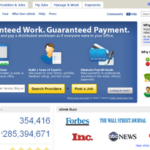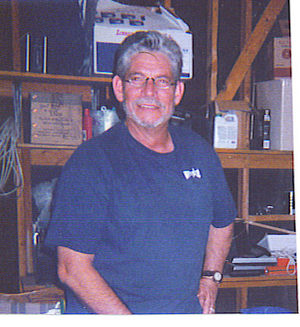There are basically 3 types of freelance art directors and copywriters – Those who freelance because they want to, those who are out of work and freelance because they have to, and those who moonlight to make extra money to pay the bills or put a down payment on a new BMW. Getting more work is easier said than done – or at least that’s what the all the freelancers I hire tell me.
The bottom line is you want to make more money – and hopefully land a steady, well paying freelance gig. Top-notch freelance artists and writers are always in demand. If you’re creative, easy to work with, flexible on price and can deliver work that is on strategy and on time, opportunities are always available.
Naturally the best opportunities are with ad agencies. Art and copy are the raw materials of the products we produce. We usually pay more and pay more quickly too. But many artists and writers complaint there’s almost a barrier they have to break through just to get a crack at freelance work.
Don’t be overly discouraged when you get the brush off, “Sorry, we don’t use freelancers”. Advertising agency receptionists lie – because they’re told to. Creative Directors lie – because we have to. We just don’t have time to look at the portfolios of every freelance art director, copywriter, illustrator, model, photographer – until we need them. Unfortunately, we can rarely forecast what that need will be or when a need for freelancers will arise.
Anybody who has worked for an ad agency for over a week knows “shit happens” all the time. A major new business pitch surfaces from out of nowhere. A top client wants some “breakthrough” thinking and threatens to leave if he doesn’t get it fast. Landing a new client and not adding more creative staff. And of course, there’s vacations, honeymoons, maternity leaves, illness, “agency blood baths” (massive layoffs when you lose business), and normal staff turnover.
Advertising agency creative departments operate on two basic principles “anxiety breeds excellence” and “tonight’s another day”. They’re our buzz words for “come up with a great campaign now or you’re fired” and “work here all night till it’s finished”.
That’s why breaking through the ad agency freelance barrier is so hard. In most situations where a freelancer is needed, a creative director can’t trust an unknown commodity because his or her ass is on the line. And since deadlines are always tight, there’s no time built in for a learning curve, or to try a new freelancer out. That’s why creative directors only use freelancers they know and have worked with before.
The only way to break the agency freelance barrier is to get the creative director to know you and your work. It can be done. It’s been done to me and I’ve given new freelancers some work. As usual, she was right on target. Creative people, especially freelancers, simply can’t market themselves.
Some confuse being persistent with being a pain in the ass. Stopping by an agency and dropping off your portfolio uninvited won’t score any points – your portfolio probably won’t even get reviewed. Camping out in a reception area hoping to catch a creative director returning from lunch isn’t going to win you a popularity contest or get you an interview either. Consistent annoying phone calls only get you on the “do not respond” list. Forget bribery, I’ve had that tried on me and it doesn’t work either.
Other freelancers are too laid back and go to the other extreme. Snail mailing a resume and cover letter rarely get any creative directors’ attention. Cold calling and leaving a few messages have an extremely low probability of success too. Let’s be honest, if cold calling doesn’t work for experienced sales reps, what makes it think it’s going to work for a creative person like you.
A leading creative head hunter in New York once told me the things that amazed her most about creative people was that they could make millions of dollars promoting their clients, but they were lousy at the business of promoting themselves. And she was right
Look at things from this angle. You’re the product you’re trying to sell. Ad agency creative directors in your area are the potential buyers. If this were any other product what would an ad agency do?
Simple. Study your target audience and its needs. Then create a plan and an advertising campaign that gets the audience to buy the product – in this case you.
Begin by making a list of all the agencies in your area from the “Agency Redbook” or your local ad club or chamber of commerce. Also, simply go to your favorite search engine and type in “advertising agencies in (your town USA). This search results usually return directories and yellow page listings, local business associations, portals, individual agency web sites, agency press releases and other online sources of information. All provide lots of information you need.
Be sure to include “direct response agencies”, “direct marketing agencies”, “internet agencies”, “interactive agencies” and “marketing communications” on your list. They all need art direction and copywriting too. Skip PR agencies since their art direction and copy needs are usually fairly minimal and very dull.
Review your findings and create a spreadsheet of the advertising agency names, their street addresses, the creative director and his or her phone and email, and a column where you can list their key accounts. Next to their accounts create a column for your experience that relates to their key accounts. Finally, create two final columns for your “contact dates” and “comments”.
Most of the good stuff will probably come from the agency web sites. Every agency has a site where they love to show off their stuff. Usually you can get the creative director’s name and some contact information too.
The creative director may not the person assigning freelance jobs. In larger agencies, “”group” and “associate” creative directors or “art” and “copy” supervisors” often assign the bulk of the freelance work. Creative directors in smaller shops frequently have to devote most of their time to new business or client issues, so they delegate assigning freelancers to senior staff artists and writers,
Try to get the emails of each agency’s key creative people from the web sites, the “Red Book” or industry directories. You may have to call the agency for the email addresses.
If the agency won’t release email addresses, use your “email intelligence”. Check the web site for the agency’s new business director whose email address is almost always listed. If his name is Jeff Green and his email is jgreen @ agency name dot com, a creative director named Joe Doe would have an email jdoe@ agency name dot com.
Always start with the creative director who usually sets the agency freelance policy and its needs. Contact the creative director’s office to learn how freelance work is assigned and what staff members assign it. Consider including all senior creative staff as part of your target audience too, since they often make recommendations and supervise your work- even if the creative director hands out the actual assignments.
You know your objective is to get more advertising agency freelance work. Now it comes time to think about strategies or how you’re going to go about getting this work.
Like any product, you have features, advantages and benefits you can offer the customer, the agency. Now it’s time to match your key benefits to the agency’s needs.
Study the agency’s online portfolio to get an indication of what they do and the freelance help they could potentially need. First, try to match your relevant experience to their accounts and post it on the spreadsheet you’ve created. If you have any experience that relates to clients on the agency list, and great samples to prove it, you’re off to a great start. A creative director who needs a freelance help on a car dealership account might just give you shot if you’ve worked on several automotive accounts in the past.
Identify any “holes” in their portfolio that might indicate an agency need and an entry point for you. Many general advertising agencies, for example, aren’t strong in specialized creative areas like web design or direct mail. So if their site contains little or no direct mail or web work, chances are they could use a killer freelance designer and writer in these areas when the need arises.
Develop a basic strategy and positioning that can targeted to each agency and its needs. After all, freelancers are hired to fill very specific agency needs. They are rarely called in to work on a variety of agency accounts, unless they’re filling a temporary vacancy created by a maternity leave or leave of absence.
Your core strategy should be convincing the creative director that you are “an experienced creative professional who produces great work that gets results, and consistently delivers it on time, on strategy, and within budget”. This is should be your basic because it’s what every agency is looking for in a freelancer.
For agencies that could have a need for specific product experience you possess, add to the core strategy the fact that you that you have extensive experience in those fields
For direct response agencies or general agencies who could use your talents in direct mail or DRTV, position yourself as a “direct marketing creative pro.
There’s an old show biz saying “always keep them coming back for more. This is what makes “teaser campaigns” so effective in advertising various products including yourself.
Creative directors don’t have time to view entire portfolios unless they’re looking to hire someone for a specific and immediate staff or freelance assignment, That’s why in trying to get an interview for freelance work, a teaser email or snail mail campaign can produce results.
Send an email to the creative director with the appropriate creative professional positioning copy you’ve decided on along with a link to your personal web site …or attach 3 or 4 low resolution JPEGS or PDFs of your greatest work.
Be sure to include in the email that these are just a small sample and that you have an entire portfolio you’d love to have the opportunity to present in person.
If you don’t receive a response in a week, send an email with a few new samples and a copy of your resume.
After 2 emails, if you still don’t receive a response, follow-up with a phone call to the creative director to see if he received your emails. If you got no response it’s possible a filter put them in the “spam mail” folder.
Email is a good way to reach a creative director because it’s quick and easy – both to read and reply to. When I receive emails of this nature I usually make the time to look at the samples and quickly reply in one of several ways:
“Thanks for your email. We don’t have any freelance needs now but I’ll keep this on file for future use. Thanks again” – The nice brush off
“Thanks for your email. You’ve done some interesting work. We have no freelance needs at the moment -but keep in touch with me periodically cause things could change – the honest answer.
“Email me an electronic portfolio, and I’ll review it when I have a chance”- a better honest answer
“Great work. Email me to set up an appointment to meet you and see more of your work”-The answer you want.
Agencies are looking for professional art directors and writers. Freelancers who act like prima donnas, or who are argumentative, arrogant, unreliable or unfriendly usually are not given the work, regardless of how good their portfolio samples might be.
Agencies usually have set hourly or weekly rates or a fixed project budget. Freelancers who pad their bills with extra hours, inflate expenses or who go over budget usually aren’t given a second chance
There are other ways to break the agency freelance barrier. This is the quickest, easiest, cheapest and most effective.





